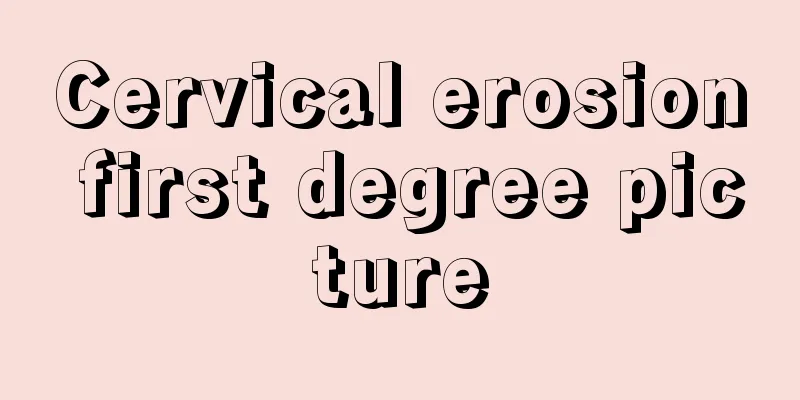Appendectomy in the era of minimally invasive surgery

|
In the medical field, the development of minimally invasive surgical techniques has provided new options for the treatment of many diseases, especially in the field of general surgery. Appendicitis is a common acute disease, and appendectomy is the main surgical method for treating acute appendicitis. With the continuous advancement and popularization of minimally invasive surgical techniques, minimally invasive appendectomy has become one of the routine surgeries in the field of general surgery. This article will introduce the relevant knowledge of appendectomy, including surgical indications, surgical methods, surgical advantages, and postoperative care, to help readers better understand and recognize this minimally invasive surgical technique. 1. Indications for minimally invasive appendectomy Minimally invasive appendectomy is suitable for patients with acute non-recurrent appendicitis, that is, patients with acute appendicitis for the first time. For acute recurrent appendicitis, appendix abscess, appendix perforation and other cases, due to the complexity of the condition, traditional open surgery may be required. The surgical indications for minimally invasive appendectomy mainly include the following: 1. Acute non-recurrent appendicitis 2. No obvious signs of peritonitis 3. No contraindications, such as bleeding tendency, severe cardiopulmonary insufficiency, etc. In clinical practice, doctors will determine whether minimally invasive appendectomy is suitable based on the patient's specific situation and the severity of the disease to ensure the safety and effectiveness of the operation. 2. Minimally invasive appendectomy surgical method Minimally invasive appendectomy mainly includes two methods: laparoscopic surgery and single-port laparoscopic surgery. The specific steps of these two surgical methods are introduced below. (1) Laparoscopic surgery Laparoscopic surgery is currently the most widely used minimally invasive appendectomy method, and its steps mainly include the following aspects: 1. Anesthesia: After the patient receives general anesthesia, the doctor injects CO2 gas into the patient's abdomen to expand the abdominal cavity and create conditions for surgery. 2. Incision: The doctor makes 3-4 small incisions in the patient's abdomen to insert the laparoscope and surgical instruments. 3. Exploration: The doctor uses laparoscope to observe the appendix and determine its location and degree of inflammation. 4. Resection: The doctor uses surgical instruments to remove the inflamed appendix and checks the abdominal cavity for other abnormalities after removal. 5. Suture: The doctor will sew up the incision and complete the operation. Laparoscopic surgery has the advantages of less trauma, quick recovery, and fewer postoperative complications. It is currently the preferred method for treating acute non-recurrent appendicitis. (2) Single-port laparoscopic surgery Single-port laparoscopic surgery is a more minimally invasive surgical method, characterized by the fact that the surgery only requires a small incision in the umbilicus, which reduces trauma and pain to the abdomen. The steps of single-port laparoscopic surgery are similar to those of laparoscopic surgery, but the operation is more complicated and requires higher technical skills from the doctor. Single-port laparoscopic surgery has obvious advantages in cosmetic effects and postoperative recovery, but due to the difficulty of operation, it is not very common in clinical applications. Advantages of minimally invasive appendectomy Compared with traditional open surgery, minimally invasive appendectomy has many obvious advantages, including the following: 1. Less trauma: Minimally invasive surgery only requires a few small incisions, which reduces damage to abdominal muscles and tissues and reduces postoperative pain. 2. Less bleeding: Minimally invasive surgery is delicate and involves less bleeding, thus reducing surgical risks. 3. Quick recovery: Due to the small trauma and less bleeding, the patient's postoperative recovery time is short and they can quickly return to normal life and work. 4. Good aesthetic effect: Minimally invasive surgery has small incisions, and the postoperative scars are more beautiful, which is beneficial to the patient's mental health. Due to the many advantages of minimally invasive appendectomy, more and more patients choose minimally invasive surgical treatment, which improves the safety of the operation and the patient's treatment experience. 4. Postoperative care of minimally invasive appendectomy Postoperative care is one of the keys to the success of minimally invasive appendectomy. Proper postoperative care can speed up the patient's recovery and reduce the occurrence of complications. Here are some common postoperative care measures: 1. Rest: After surgery, patients need to get enough rest and avoid strenuous exercise to avoid affecting wound healing. 2. Diet: After surgery, patients should eat light and easily digestible food and avoid greasy and irritating food. 3. Wound care: Keep the surgical incision dry and clean, change the dressing regularly, and pay attention to prevent infection. 4. Regular follow-up visits: Patients need to follow up on time after surgery to regularly check wound healing and disease progression. Through scientific and reasonable postoperative care, patients can recover faster, reduce the occurrence of complications, and improve the success rate of surgical treatment. Minimally invasive appendectomy is an important surgical method in the field of general surgery, providing a new option for the treatment of diseases such as acute appendicitis. By introducing the surgical indications, surgical methods, surgical advantages and postoperative care, we hope to help readers have a more comprehensive understanding of the relevant knowledge of minimally invasive appendectomy and provide better protection for the health of patients. Author: Yan Haipeng, Yongqing County People's Hospital |
<<: Wisdom from Urine: Understand urine routine and I will know my health!
Recommend
The difference between 37-week cesarean section and 38-week cesarean section
For expectant mothers, the body recovery rate aft...
How effective is Sichuan pepper water in treating cervical erosion?
Cervical erosion is troubling many women. I belie...
Can girls eat grapes during menstruation?
Women are very weak during their menstrual period...
High-definition map of female meridians
Meridians are a general term for meridians and co...
What is the cause of the pain on the left side of my breast?
Sometimes breast pain is normal. For example, whe...
What is the chance of pregnancy during the dangerous period?
The dangerous period of pregnancy can also be sai...
What foods can make your breasts bigger
I believe that having plump and firm breasts is e...
Abnormal fishy smell of leucorrhea
Under normal circumstances, women's vagina wi...
Are the consequences of using Gongjie Pills serious?
Under normal circumstances, the female vagina wil...
Why is there pelvic effusion? What is pelvic effusion?
Why is there pelvic effusion? This requires us to...
Threatened abortion secretion picture
For expectant mothers in the early stages of preg...
Acanthosis nigricans Polycystic ovary
Acanthosis nigricans is one of the symptoms of po...
Is there a nipple in the breast?
Female friends are often confused because they ca...
Does breast development hurt in girls?
Girls need to go through breast development durin...
How to adjust the gestational sac to the right uterine angle
After a woman becomes pregnant, a gestational sac...









